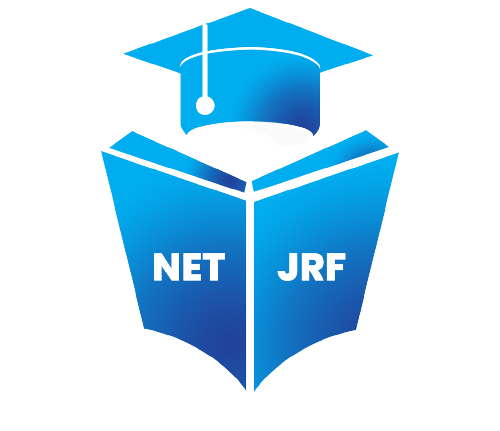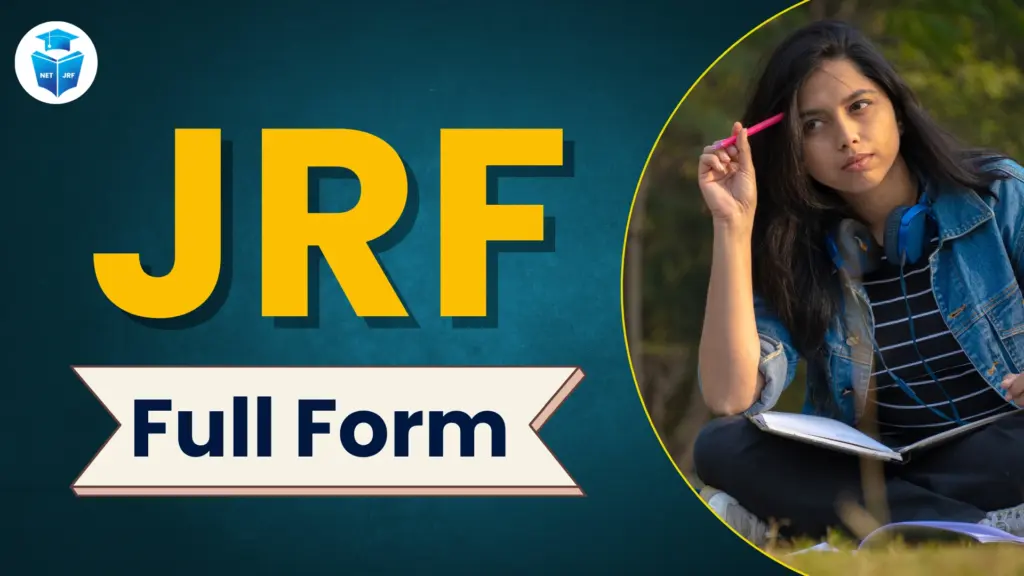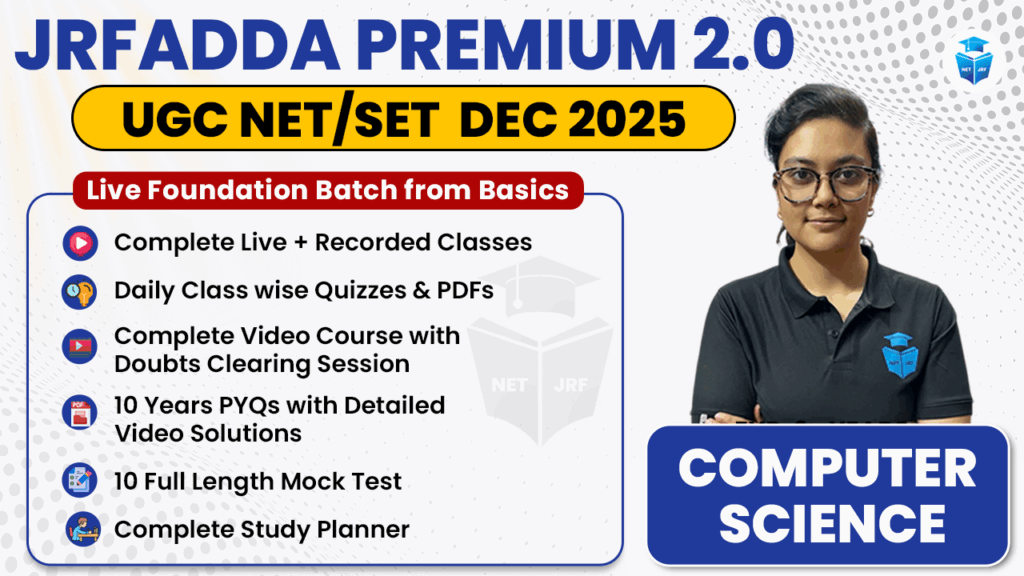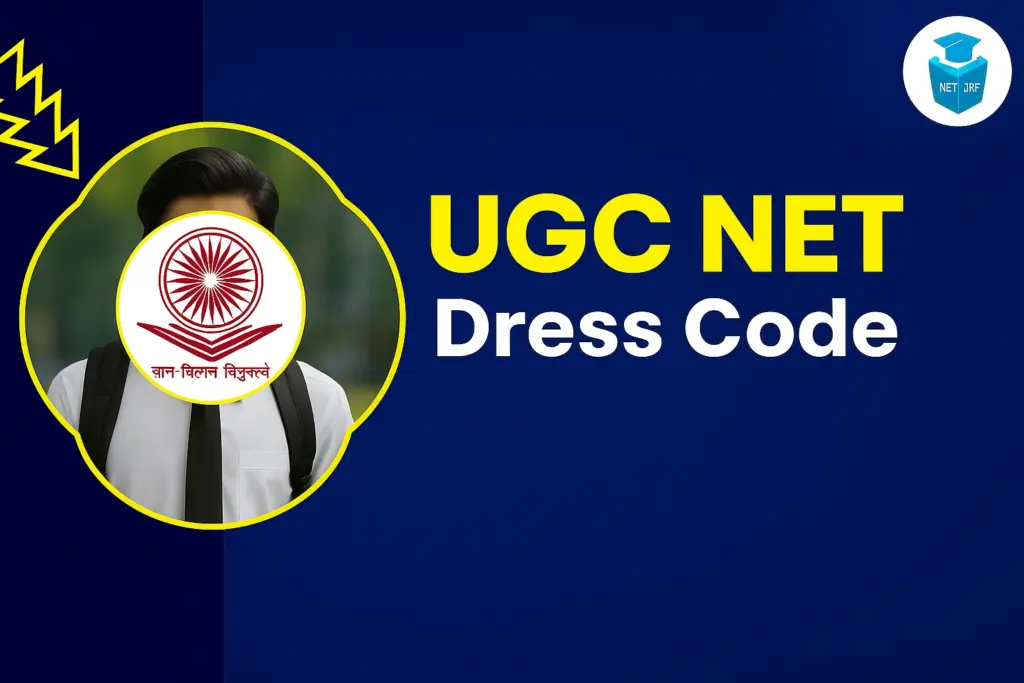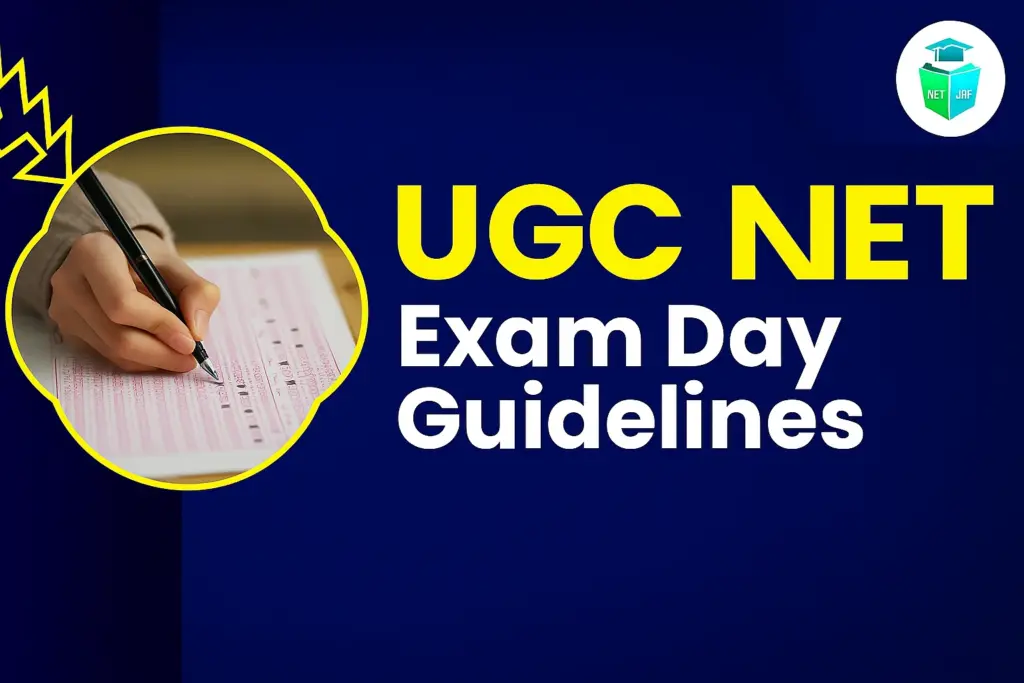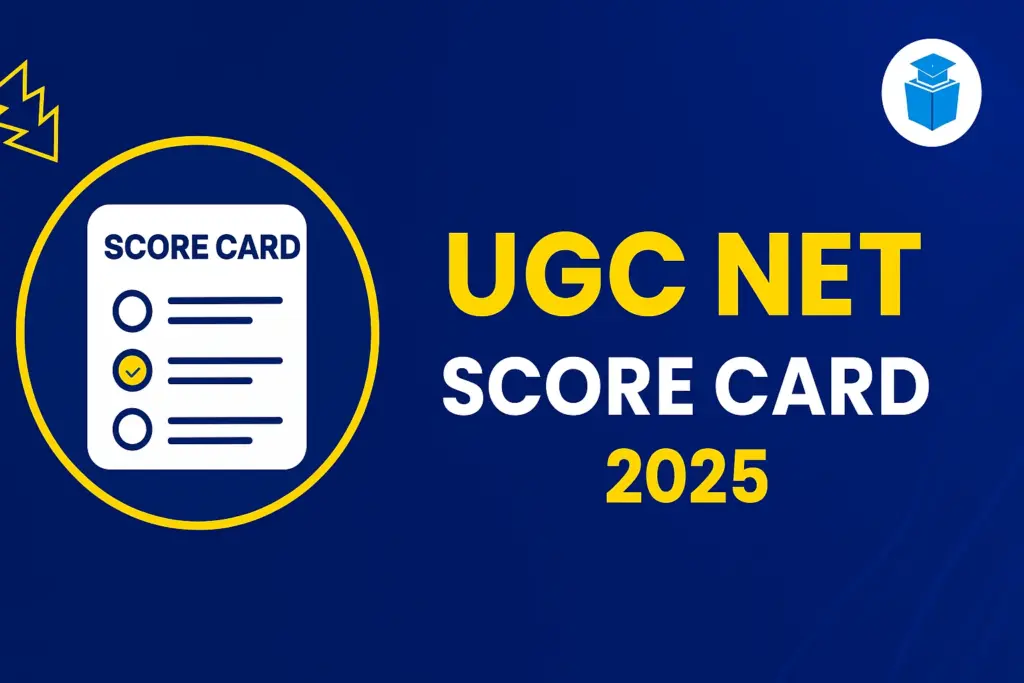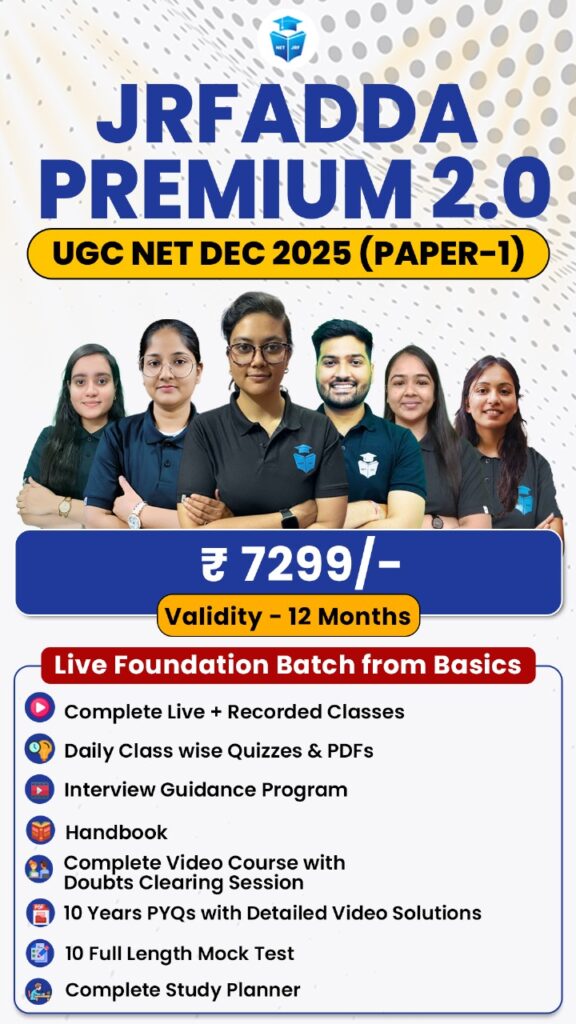JRF Full Form 2025 stands for Junior Research Fellowship, an important academic fellowship awarded to candidates who qualify in the UGC NET Examination. The JRF not only provides financial support for advanced research but also opens the door to a career in teaching, research, and higher studies.
This article will guide you through every detail about the NET JRF meaning, including JRF full form, JRF eligibility criteria, subjects, syllabus, and selection procedure, helping aspirants clearly understand this coveted fellowship.
JRFadda Complete Revision Capsule Course Paper 1- Join Now!
JRF Full Form in English 2025
The UGC NET JRF full form in English is Junior Research Fellowship. It is a central government fellowship scheme offered by the University Grants Commission (UGC) to candidates who qualify the National Eligibility Test (NET) conducted by NTA (National Testing Agency).
Through this fellowship, selected candidates are eligible to pursue research in their postgraduate subject or any related field, with financial assistance for a fixed tenure, usually five years.
JRF Full Form in Hindi
For Hindi medium aspirants:
JRF Full Form in Hindi – जूनियर रिसर्च फेलोशिप
यह एक फेलोशिप योजना है जिसके अंतर्गत योग्य उम्मीदवारों को शोध व रिसर्च कार्य करने के लिए वित्तीय सहायता दी जाती है।
Also Read: Career Options After UGC NET
NET JRF Meaning
JRF stands for Junior Research Fellowship, a prestigious scholarship program offered by national research bodies like the University Grants Commission (UGC) or the Council of Scientific and Industrial Research (CSIR) in India. The main goal of the JRF qualification is to support young scholars who want to pursue advanced research and enroll in doctoral (PhD) programs at recognized universities or research institutes.
Also Read: UGC NET JRF 2025
What is the meaning of JRF exam?
The UGC NET JRF full form is Junior Research Fellowship, it is an award that recognizes academic excellence. Candidates who qualify UGC NET with an exceptional rank are offered the JRF qualification along with eligibility for lectureship.
In simple terms:
- JRF is for research scholars and doctoral aspirants.
- NET Qualified-LS (Lectureship) candidates are eligible for teaching roles.
- NET Qualified-JRF holders are eligible for both teaching and research with a stipend.
Thus, JRF = Top rank + Research opportunity + Financial support.
Also Read: Job Opportunities After Qualifying UGC NET
JRFAdda Gold June 2026 English Batch (Paper1+Paper2)- Join Now!
What is JRF Exam Eligibility?
Before applying for the Junior Research Fellowship (JRF), candidates must carefully check the JRF eligibility criteria set by UGC. These include educational qualifications, age limit with relaxations, and nationality requirements, ensuring only deserving aspirants move forward in the selection process. The JRF exam eligibility criteria are as follows:
- Educational Qualification – Master’s degree OR equivalent in Humanities, Social Sciences, Computer Science, Environmental Science, Electronics Science, etc., with at least 55% marks (50% for SC/ST/OBC/PwD).
- Age Limit – The maximum age limit for JRF is 30 years.
Relaxation: OBC/SC/ST/PwD/female candidates are given up to 5 years of relaxation. - Nationality – Candidate must be an Indian citizen.
Also Read: UGC NET Eligibility Criteria 2025
JRF Subjects
The Junior Research Fellowship (JRF) covers a wide spectrum of subjects. With more than 80 subjects under UGC NET, candidates can choose their specialization based on their postgraduate discipline, ensuring opportunities for diverse academic and research interests. The UGC NET exam for JRF covers the following subjects:
- Humanities (History, Political Science, Philosophy, Sociology, etc.)
- Social Sciences (Economics, Education, Psychology, Public Administration, etc.)
- Languages (English, Hindi, Sanskrit, regional languages, etc.)
- Sciences (Physics, Chemistry, Life Sciences, Environmental Science, etc.)
- Commerce and Management
- Computer Science and Applications
Also Read: UGC NET Subject List 2025
JRF Syllabus
The JRF syllabus is aligned with the UGC NET framework and is designed to test both general aptitude and subject-specific knowledge. It is divided into two papers—Paper I assessing teaching and research skills, and Paper II focusing on the candidate’s chosen postgraduate discipline, ensuring a balanced evaluation of core competence and aptitude.
- Paper I (General Aptitude Test)
- Teaching Aptitude
- Research Aptitude
- Reading Comprehension
- Communication
- Logical Reasoning
- Mathematical & Data Interpretation
- Information & Communication Technology (ICT)
- Higher Education and Governance
- Paper II (Subject-Specific)
- Based on the candidate’s post-graduate subject.
- Covers detailed and advanced concepts in the chosen discipline.
Both papers are objective-type (MCQs) conducted online.
Also Read: UGC NET Syllabus 2025
JRFAdda Premium June 2026 UGC NET Paper-1 Batch- Join Now!
JRF Selection Procedure 2026
The JRF selection process is carried out through the UGC NET examination conducted twice a year (June and December). The process involves applying online, qualifying through two written papers, meeting the prescribed cut-off, and finally being awarded the fellowship to pursue advanced research.
- Step 1 – Online Application
Candidates fill out the form via the NTA website. - Step 2 – NET Examination
- Paper I (Common Aptitude Test).
- Paper II (Subject-specific).
- Step 3 – Result & Cut-Off
- Candidates who score above the cut-off in their subject are declared NET qualified.
- Top-ranking candidates among them are awarded JRF.
- Step 4 – Fellowship Award
- Selected JRF candidates receive a research stipend for a fixed duration.
- They can pursue a Ph.D. or advanced research in their chosen field.
Also Read: UGC NET Selection Procedure 2025
Benefits of JRF Qualification
The JRF full form is Junior Research Fellowship (JRF). It offers multiple advantages that go beyond financial aid. From providing a monthly stipend for research to ensuring priority access in premier institutions, it creates a strong foundation for careers in teaching, research, and academics.
- Monthly stipend and HRA for research.
- Priority admission in reputed universities and research institutions.
- Opportunity to become an Assistant Professor or Lecturer.
- Preparation pathway for a career in research and academics.
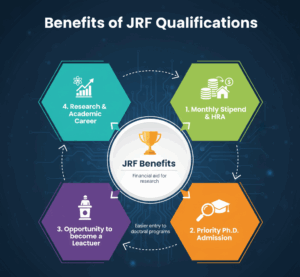
Also Read: UGC NET Salary 2025
Conclusion
To conclude, JRF Full Form is Junior Research Fellowship, a prestigious JRF qualification under UGC NET. The NET JRF means more than a certification—it is a gateway to financial support, high-quality research opportunities, and a rewarding academic career. For aspirants preparing for JRF, understanding the JRF full form, eligibility criteria, syllabus, and selection procedure is crucial. With focused preparation, one can unlock both research and teaching opportunities.
JRF Full Form FAQs
How is JRF different from NET?
NET is the overall exam for eligibility. JRF is a fellowship given to top-qualified candidates. JRF holders get a stipend for research, while NET-qualified (LS) candidates can apply for teaching jobs.
What is JRF exam eligibility?
Candidates must have a minimum of 55% in post-graduation, be under 30 years of age for the fellowship, and appear in the UGC NET exam.
How long is the JRF valid?
The JRF certificate is valid for three years for fellowship opportunities. However, once enrolled in a Ph.D. program, the support continues for up to five years.
What are the JRF Subjects offered?
UGC NET JRF covers more than 80 subjects, including Humanities, Social Sciences, Languages, Commerce, Management, Environmental Science, Computer Science, etc.
What is the JRF stipend amount?
Currently, the JRF stipend is around ₹31,000 per month for the first two years, and ₹35,000 for the next three years, along with HRA depending on the institution's rules.
